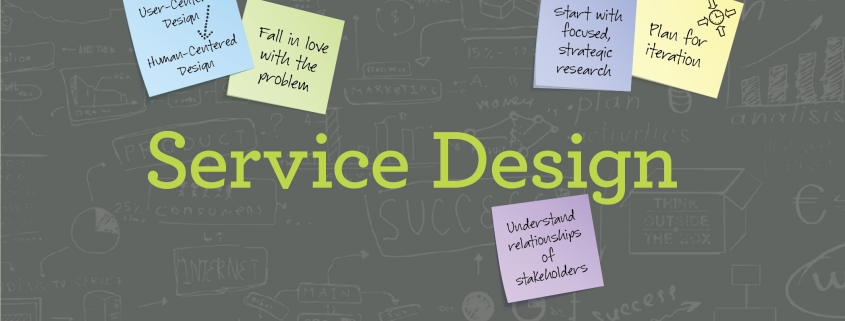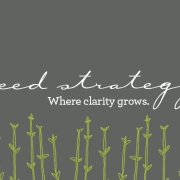How to Think Like a Service Designer to Unlock Lasting Innovation
Services exist all around us. Yet, when it comes to innovation, we almost always gravitate towards improving the tangible product, and forget to address the layered systems that surround it.
This is why Service Design plays such an important role in the innovation process. In the last decade, Service Design has proven to be an effective method for improving existing offerings as well as creating new ones.
Service Design is all about stretching your thinking past the physical and into the intangible systems that subtly connect the world around us. For example, a car might take you to a desired destination, but we rarely think about the services that were put in place to make that ride possible. Hidden within the car ride getting you to your desired destination are millions of things that could go wrong to disrupt the experience. Yet, the service is so streamlined that we, as consumers, hardly notice—unless something does go wrong.
As an innovator, it’s important to peel back those layers and look closely at the system, because behind a tangible problem often lies a broken service that needs to be acknowledged. Service Design helps make sure that we dig for deeper roots—so we can go beyond quick-fix innovation efforts to cultivate true, lasting solutions.
Here are 5 ways to think like a Service Designer so you can unlock enduring innovation:
1. Re-route your thinking from User-Centered Design to Human-Centered Design.
So what’s the difference between a user and a human? By calling a human a user, they are only being evaluated for their actions in a given time and place. If we switch our thinking to the user being an actual person, we think about information in a different context. For example, a user orders a car with an app, gets in the car, listens to music, has a quick conversation with his driver, and gets out of the car upon arrival. The human orders a car because he’s late to class, the music he listens to on the way calms him down, and the conversation with his driver takes his mind off the fact that he’s late. Human-centered design incorporates emotions that turn innovation efforts into connective experiences.
2. Start with focused, strategic research.
Designing without researching is like blindly pinning the tail on the donkey. Though it can be tedious, thorough research done correctly brings far more value to your end result than many people realize. Having a strategic research framework will lead to ideas that are relevant and grounded in the everyday.
3. Understand the complex relationships of stakeholders.
Seamlessly handing off your ideas to key stakeholders is crucial to the success of any innovative project. Having a comprehensive understanding of every stakeholder provides a smooth transition for implementation and innovation that will last long after you’re gone. Using a tool called a Stakeholder Map is a great way to ensure that you’ve covered all of your stakeholder bases. This map is a visual or physical representation of the various groups involved with a particular service. By representing all the people of a given system, you can see the relationships they have with each other, and in return, allow yourself to understand the different groups you may be impacting.
4. Fall in love with the problem, not the solution.
It’s human nature to love solutions. Transforming human frustrations into enjoyable experiences is a fundamental goal of any good designer or innovator. However, loving the solution too much could disrupt the chances of successful outcomes. When we believe that we have found the answer to a problem, our brain shuts off the desire to continue ideating. This prohibits the opportunity for finding alternative ideas that could also be the solution, creating only one path for the problem to be explored, and later solved. Falling in love with the problem allows you to look deeper into the situation and explore the roots of why the problem came to be in the first place. The quicker you are to develop interest instead of frustration with the problem, the quicker you are to finding a lasting solution.
5. Plan for iteration: The job is never done.
It’s easy to think about processes as having an exact beginning, middle and end. We are constantly thinking about where we are going next, or when a task we are currently working on will be over with. Because of this, it can be hard to embrace the mindset that what you’re creating has no endpoint. But Service Design thinking, like innovation, is a naturally iterative process—it’s all about understanding that the job is never really done, and that the end is only another beginning. Iteration is the result of a world where change is the only constant. Adopting this mindset will allow you to embrace ambiguity with open arms and continue to make your ideas better, past the point of feeling done.
Do you have any experience using Service Design as part of your innovation process? How did it go? I’d love to hear about it. Comment below or connect with me on Linkedin.
Written by Macie Whitbeck. Macie is a Creative Strategy Consultant for Seed Strategy and a Service Design student at Savannah College of Art and Design. She is passionate about using Service Design thinking to become a disruptive force in improving people’s lives beyond the screen.
Edited by Adam Siegel. In addition to being the Editor of The Accelerator, Adam is a Creative Director at Seed Strategy where he draws upon his diverse experience in advertising, research and innovation to craft breakthrough creative and winning concept copy.
Connect with us! Follow Seed Strategy on our LinkedIn, Twitter, Facebook and Instagram pages.









